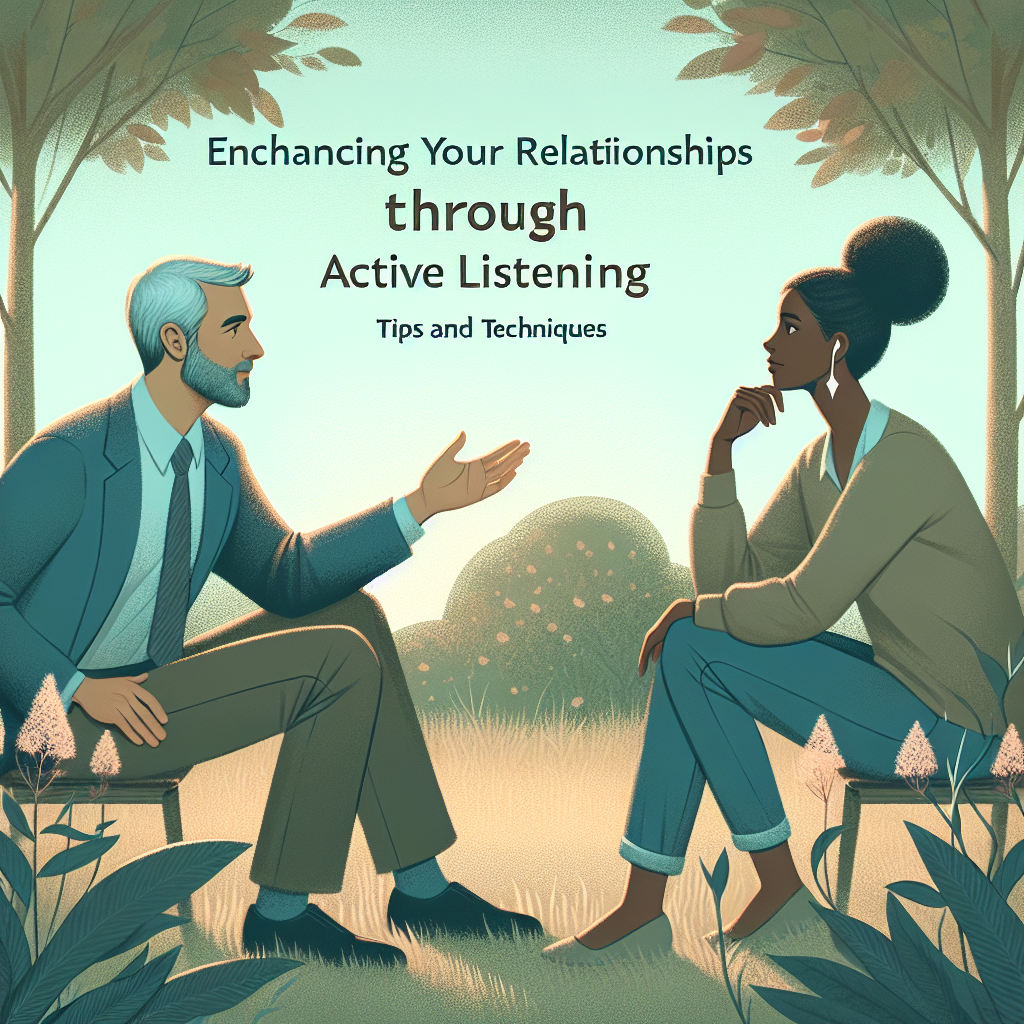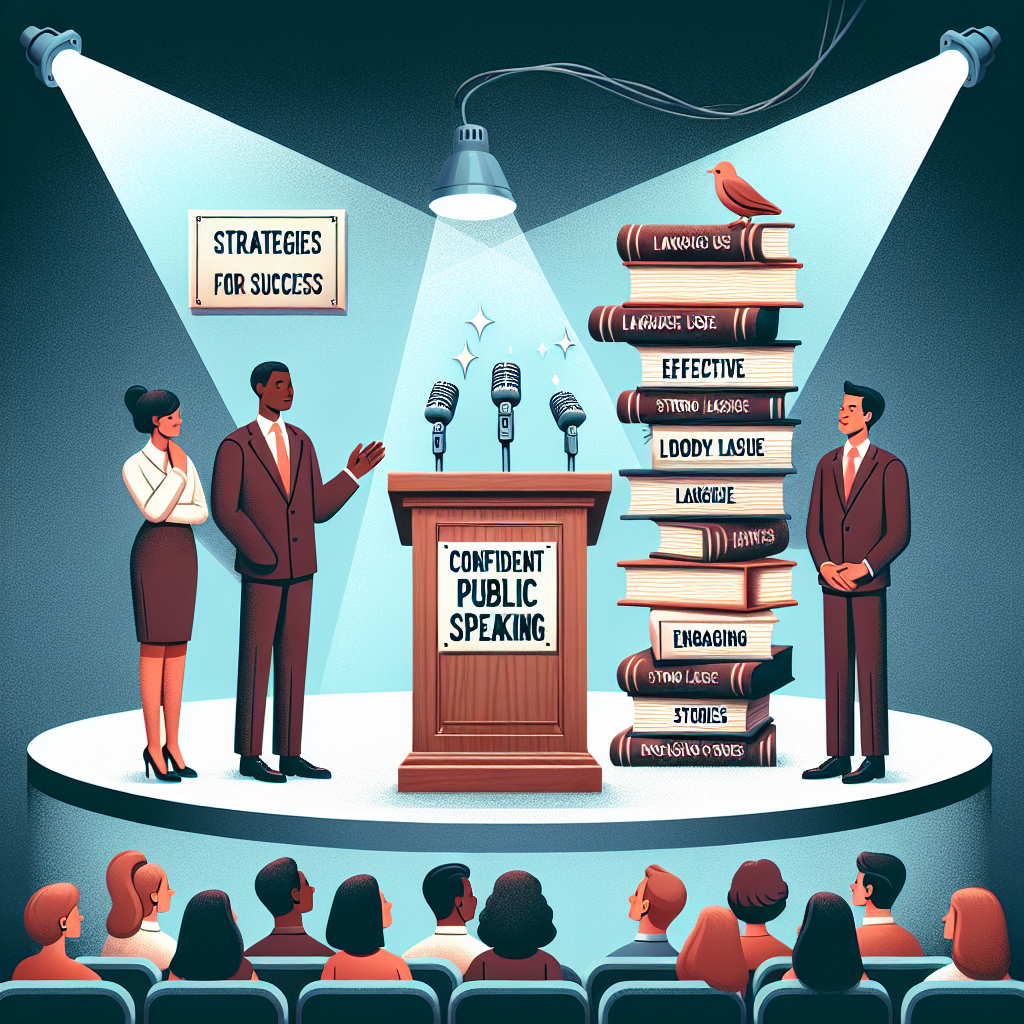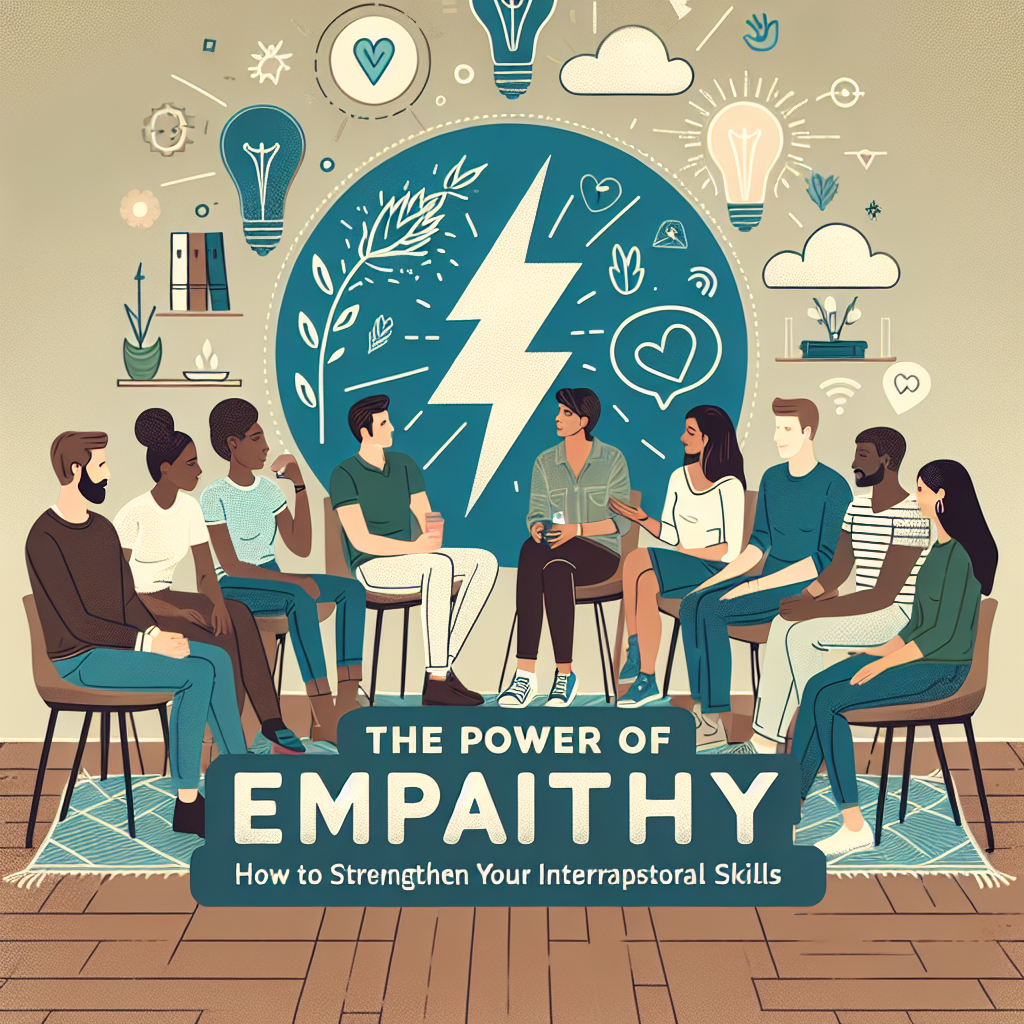Enhancing Your Relationships Through Active Listening: Tips and Techniques
Effective communication is essential for building and maintaining healthy relationships. And one of the key components of communication is active listening. Active listening is a skill that allows us to truly understand and connect with others by paying close attention to what they are saying, both verbally and non-verbally. By practicing active listening, we can improve our relationships, build trust, and foster deeper connections with those around us.
In this article, we will explore the concept of active listening and provide tips and techniques to help you enhance your relationships through this powerful communication tool.
What is Active Listening?
Active listening is a communication technique that involves fully engaging with the speaker and showing them that you are paying attention and understanding what they are saying. This includes both verbal and non-verbal cues such as eye contact, nodding, and mirroring the speaker’s body language.
Active listening goes beyond simply hearing the words someone is saying. It involves actively processing and understanding the message, asking clarifying questions, and providing feedback to show that you are engaged and interested in what the speaker has to say.
Why is Active Listening Important in Relationships?
Active listening is crucial in relationships because it helps to foster trust, understanding, and empathy. When we feel heard and understood by others, we are more likely to feel valued and respected in the relationship. In turn, this can lead to stronger connections, better problem-solving, and a greater sense of closeness with our loved ones.
In contrast, poor listening skills can lead to misunderstandings, conflicts, and feelings of frustration or isolation. When we fail to truly listen to others, we miss out on the opportunity to connect with them on a deeper level and build meaningful relationships.
Tips for Practicing Active Listening
1. Focus on the Speaker: When someone is talking to you, make a conscious effort to focus all your attention on them. Put away distractions such as phones or other devices, and give the speaker your full presence.
2. Maintain Eye Contact: Eye contact is an important non-verbal cue that shows you are actively listening and engaged with the speaker. It also helps to communicate empathy and understanding.
3. Use Open Body Language: Show the speaker that you are open and receptive to what they are saying by using positive body language. This can include nodding, leaning in slightly, and mirroring the speaker’s gestures.
4. Avoid Interrupting: Allow the speaker to finish their thoughts before responding. Interrupting can be perceived as disrespectful and can hinder the flow of communication.
5. Reflect and Clarify: Repeat back key points the speaker has made to ensure you have understood them correctly. Ask clarifying questions to gain a deeper understanding of their perspective.
6. Respond Appropriately: Provide feedback and validation to the speaker to show that you are actively listening and engaged. This can include paraphrasing what they have said, offering empathy or support, and sharing your own thoughts and feelings in response.
Techniques for Enhancing Active Listening
1. Paraphrasing: Repeat back in your own words what the speaker has said to demonstrate that you have understood their message.
2. Summarizing: Provide a brief summary of the key points the speaker has made to show that you have been actively listening and processing the information.
3. Reflecting Feelings: Acknowledge and validate the speaker’s emotions by reflecting back the feelings they have expressed. This can help to build empathy and understanding in the conversation.
4. Asking Open-Ended Questions: Encourage the speaker to expand on their thoughts and feelings by asking open-ended questions that require more than just a yes or no answer.
5. Mirroring: Match the speaker’s body language and tone of voice to show that you are attuned to their emotions and engaged in the conversation.
FAQs about Active Listening
Q: How can I improve my active listening skills?
A: Practice active listening regularly in your everyday interactions with others. Pay attention to your listening habits and make a conscious effort to focus on the speaker and show them that you are engaged and interested in what they have to say.
Q: What are some common barriers to active listening?
A: Common barriers to active listening include distractions, preconceived notions or biases, lack of empathy, and personal agendas. By identifying and overcoming these barriers, you can improve your active listening skills and enhance your relationships.
Q: How can active listening benefit my relationships?
A: Active listening can benefit your relationships by fostering trust, understanding, and empathy. When you listen to others with an open mind and heart, you create a safe space for communication and connection to thrive.
Q: What should I do if I find it difficult to practice active listening?
A: If you find it challenging to practice active listening, start by focusing on one aspect at a time, such as maintaining eye contact or avoiding interruptions. With practice and patience, you can develop your active listening skills and enhance your relationships.
In conclusion, active listening is a powerful tool for enhancing your relationships and fostering deeper connections with others. By practicing the tips and techniques outlined in this article, you can improve your communication skills, build trust, and create meaningful relationships based on empathy and understanding. Remember that active listening is a skill that can be developed over time with practice and dedication, so don’t be discouraged if it doesn’t come naturally to you at first. With persistence and effort, you can become a more attentive and empathetic listener, and reap the rewards of stronger and more fulfilling relationships in your life.





Leave A Comment